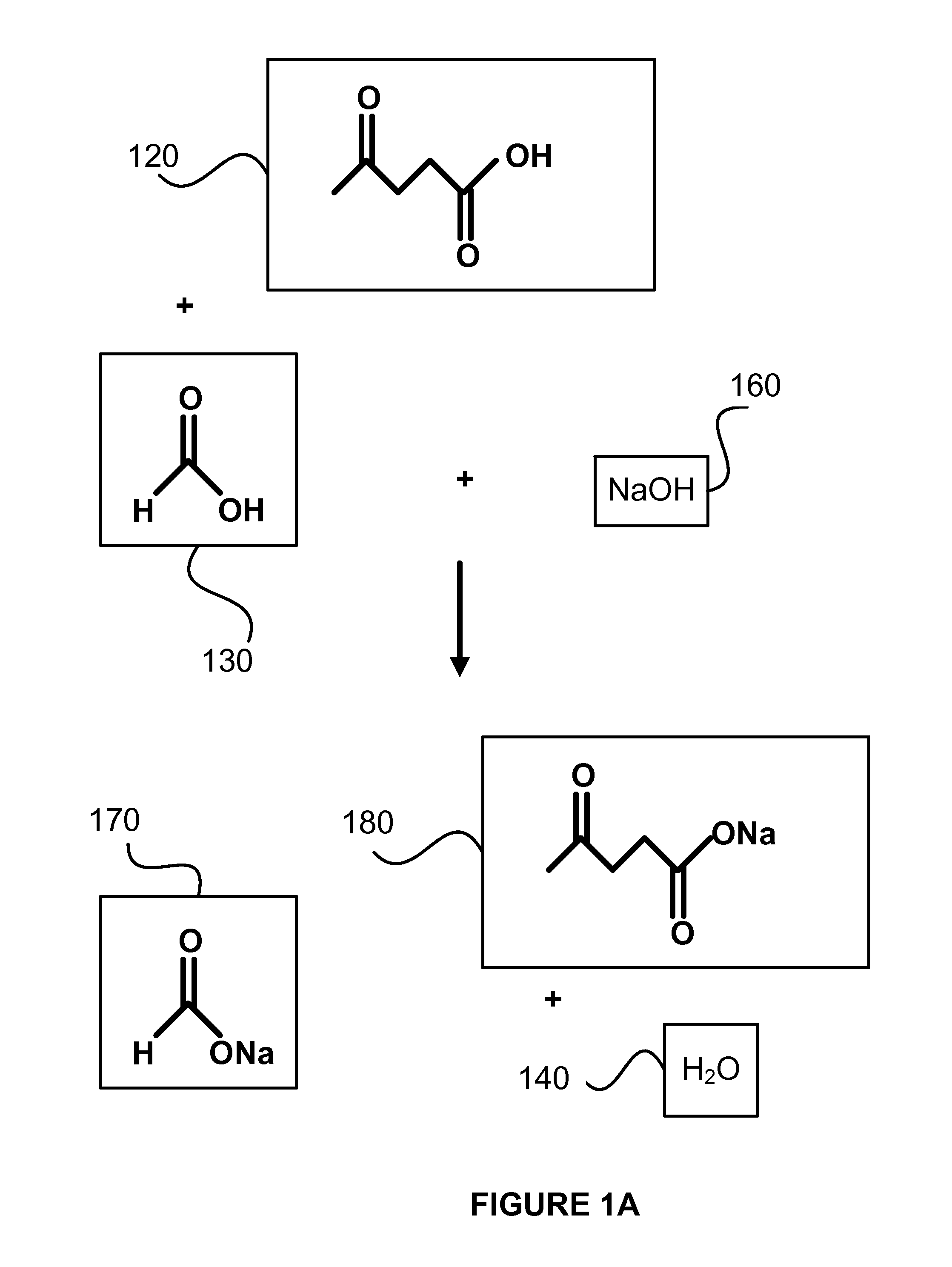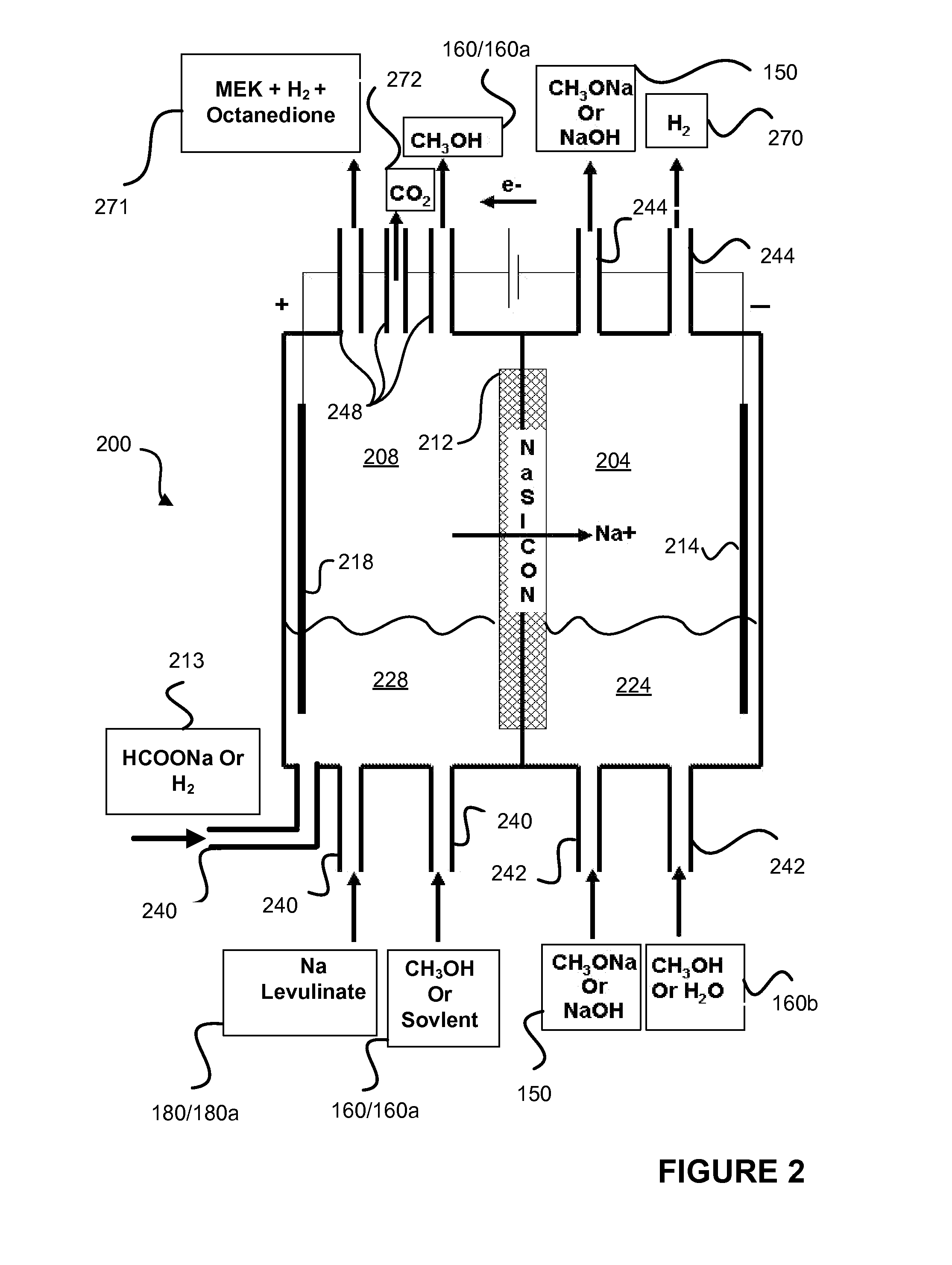Decarboxylation of levulinic acid to ketone solvents
a technology of ketone solvent and levulinic acid, which is applied in the preparation of carbonyl compounds, heterocyclic compounds, electrolytic organic production, etc., can solve the problem of high cost of mek, and achieve the effect of cheap production
- Summary
- Abstract
- Description
- Claims
- Application Information
AI Technical Summary
Benefits of technology
Problems solved by technology
Method used
Image
Examples
Embodiment Construction
[0018]The presently preferred embodiments of the present invention will be best understood by reference to the drawings, wherein like parts are designated by like numerals throughout. It will be readily understood that the components of the present invention, as generally described and illustrated in the figures herein, could be arranged and designed in a wide variety of different configurations. Thus, the following more detailed description of the present embodiments, as represented in the Figures, is not intended to limit the scope of the invention, as claimed, but is merely representative of presently preferred embodiments of the invention.
[0019]Referring now to FIG. 1, the process for converting sugar moieties into levulinic acid is described. Specifically, this process may involve converting a hexose sugar 118 (such as glucose, etc.) into levulinic acid. One example of the process is described in the following article:[0020]Bozell J., Connecting Biomass and Petroleum Processing...
PUM
| Property | Measurement | Unit |
|---|---|---|
| alkali ion conducting | aaaaa | aaaaa |
| chemical formula | aaaaa | aaaaa |
Abstract
Description
Claims
Application Information
 Login to View More
Login to View More - R&D
- Intellectual Property
- Life Sciences
- Materials
- Tech Scout
- Unparalleled Data Quality
- Higher Quality Content
- 60% Fewer Hallucinations
Browse by: Latest US Patents, China's latest patents, Technical Efficacy Thesaurus, Application Domain, Technology Topic, Popular Technical Reports.
© 2025 PatSnap. All rights reserved.Legal|Privacy policy|Modern Slavery Act Transparency Statement|Sitemap|About US| Contact US: help@patsnap.com



